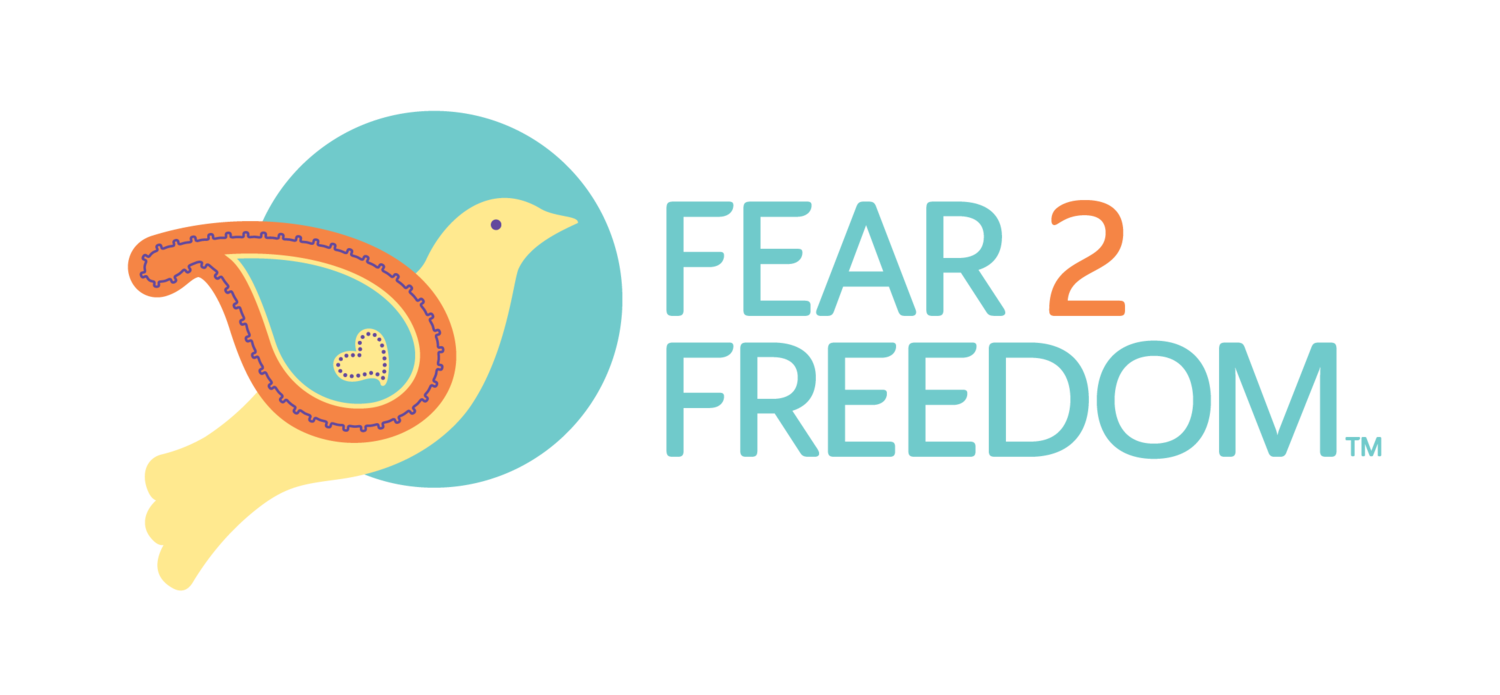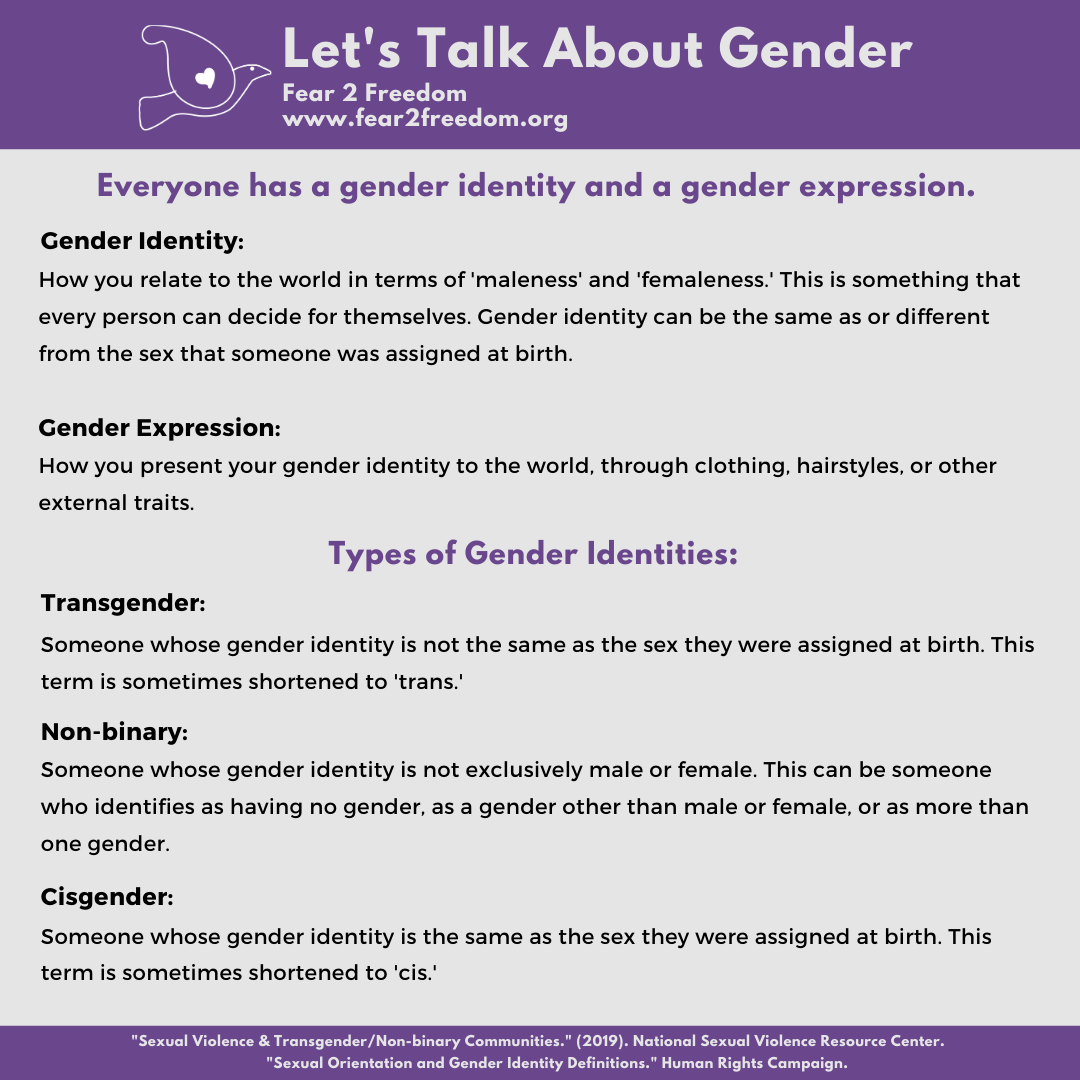By Maddie Amos, Director of Grants and Partnerships
[Content: death, murder, sexual violence, violence against LGBTQ community, racism, hate crimes]
Many people do not realize that sexual violence disproportionately impacts transgender people, especially transgender people of color. These population groups are more vulnerable to hate crimes like rape and murder, so we want to provide some context and facts for members of our community. By doing this, we can support a greater number of survivor populations and work to combat sexual violence wherever it happens.
First, some definitions. Remember, it’s best to ask someone how they define their gender identity, and then use that same language. This process is called mirroring, and it ensures that you are being respectful of everyone. These terms are always in flux, but here are some standard definitions.
From unintentionally misgendering (being called a gender other than their own) to outright harassment, transgender or non-binary individuals face struggles every day. A 2011 study, Injustice at Every Turn: A Report of the National Gender Discrimination Survey found that 78% of transgender or non-binary students in grades K-12 reported instances of harassment due to their gender expression. 35% experienced a physical assault. 12% experienced sexual violence.
Here are some more statistics relating to the disproportionate rates at which transgender individuals experience sexual violence:
Numerous surveys have identified the compounding impacts of other forms of discrimination. The 2015 U.S. Transgender Survey, identified that transgender people of color faced greater health disparities, were more likely to live in poverty, and were more likely to be unemployed than white respondents. The stigma associated with a transgender or non-binary gender identity is only compounded by the barriers that stop cisgender survivors of sexual violence from coming forward. Many survivors of color experience additional pressures including but not limited to: a desire to uphold their culture and/or community, cultural or religious restraints, fear of bringing shame to their family, and no access to affordable and culturally sensitive healthcare.
These ‘deeper and broader forms of discrimination’ include heightened risks of being the victims of fatal hate crimes. According to a press release from the American Medical Association (AMA), “...fatal anti-transgender violence in the U.S. is on the rise and most victims were black transgender women," said AMA Board Member S. Bobby Mukkamala, M.D. The National Coalition of Anti-Violence Programs recorded 52 hate violence homicides in 2017; 22 victims were trans women of color. 27 victims were transgender or gender non-conforming.
The Human Rights Campaign tracks the deaths of transgender or gender-nonconforming people in the United States. In 2020, there have been at least 16 transgender or gender non-conforming people killed by violent means. To learn their names and read their stories, you can read the Violence Against the Transgender and Gender Non-Conforming Community in 2020 report.
This can be a lot to take in. Remember to take time for self-care and keep yourself safe.
If you or someone you know is a transgender or non-binary survivor of sexual violence, or a survivor of color, please know that you are believed. You are valid, you are deserving of support. Use these simple phrases to reassure them that their experiences are not their fault. If they encountered discrimination or harassment while trying to report their experiences, the survivor may not feel safe going to traditional sexual violence services or the police. Know what local options cater to various survivor communities. You can use this feature on RAINN’s website, their locator tool, to find local options and then do further research to ensure that they can support your particular communities.
Sexual violence, and the escalation to fatal violence, disproportionately impacts transgender and non-binary communities. As advocates, we can learn about the particular challenges faced by these vulnerable populations and provide compassionate, comprehensive service options. The Resource page on our website lists culturally sensitive information and resources for survivors of various identities. Through learning more, we can be better prepared to support any survivor who may disclose to us.



